
Welcome to the biweekly electronic newsletter from Stanford Bio-X for members of the Bio-X Corporate Forum. Please contact Dr. Hanwei Li, the Bio-X Corporate Forum Liaison if you would like to be added or removed from this distribution list, or if you have any questions about Stanford Bio-X or Stanford University.
Highlights
** On October 9, 2013, Bio-X celebrated the 10th Anniversary of the James H. Clark Center, the hub of Bio-X. Check out CLARK CENTER @ 10X as well as the Bio-X Timeline over the last 15 years!!
** Check out the article by Stanford President John Hennessy in the Nov/Dec 2013 issue of the Stanford Magazine on Bio-X and the Clark Center, "A Cauldron of Innovation".
Bio-X Core Programs
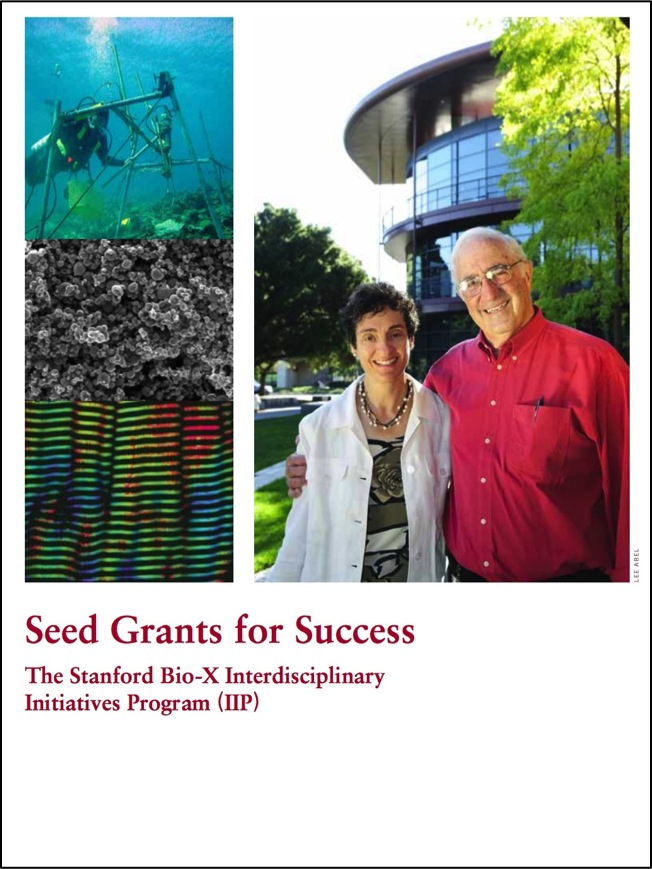 SEED GRANTS FOR SUCCESS - Stanford Bio-X Interdisciplinary Initiatives Program (IIP) SEED GRANTS FOR SUCCESS - Stanford Bio-X Interdisciplinary Initiatives Program (IIP)The Bio-X Interdisciplinary Initiatives Program represents a key Stanford Initiative to address challenges in human health. Currently, the IIP awards approximately $4 million every other year in the form of two-year grants averaging about $200,000 each. From its inception in 2000 through the beginning of the seventh round in 2014, the program has provided critical early-stage funding to 164 different interdisciplinary projects, involving collaborations from over 750 faculty members, and creating over 700 teams from six different Stanford schools. From just the first 6 rounds, the IIP awards have resulted in a 10-fold-plus return on investment, as well as hundreds of publications, dozens of patents filed, and most importantly, the acceleration of scientific discovery and innovation. In 2014, Bio-X started it's 7th round of the Bio-X IIP Seed Grants Program, and 22 newly awarded projects were selected from 142 Letters of Intent (LOIs)! This has been the largest number of LOIs that Bio-X has received. Please go here to check out the newly awarded projects. Competition was intense, and the selection criteria included innovation, high-reward, and new interdisciplinary collaborations. (To view the 142 other IIP projects that have been funded from the previous 6 rounds, please click here.) |
 Bio-X FELLOWSHIPS Bio-X FELLOWSHIPSEvery year, graduate students and postdoctoral scholars of Bio-X affiliated faculty are highly encouraged to apply for the Bio-X Fellowships, which are awarded to research projects that are interdisciplinary and utilize the technologies of different fields to solve different biological questions. Students are encouraged to work collaboratively with professors of different departments, thus creating cross-disciplinary relationships among the different Stanford schools. Our fellows have conducted exciting research, resulting in publications in high-impact journals and have been offered excellent positions in industry and academia. To date, Stanford Bio-X has a total of 173 Fellows. The winners of the 2015 PhD Fellowship program will be announced later on this year on October 6, 2015 during our Fellows Symposium. The full agenda for the symposium is also listed below under "Events". IF YOU'D LIKE TO ATTEND, PLEASE EMAIL DR. HANWEI LI. You can view the numerous Fellowship projects that have been awarded over the years as well as oral presentations from previous symposiums here. |
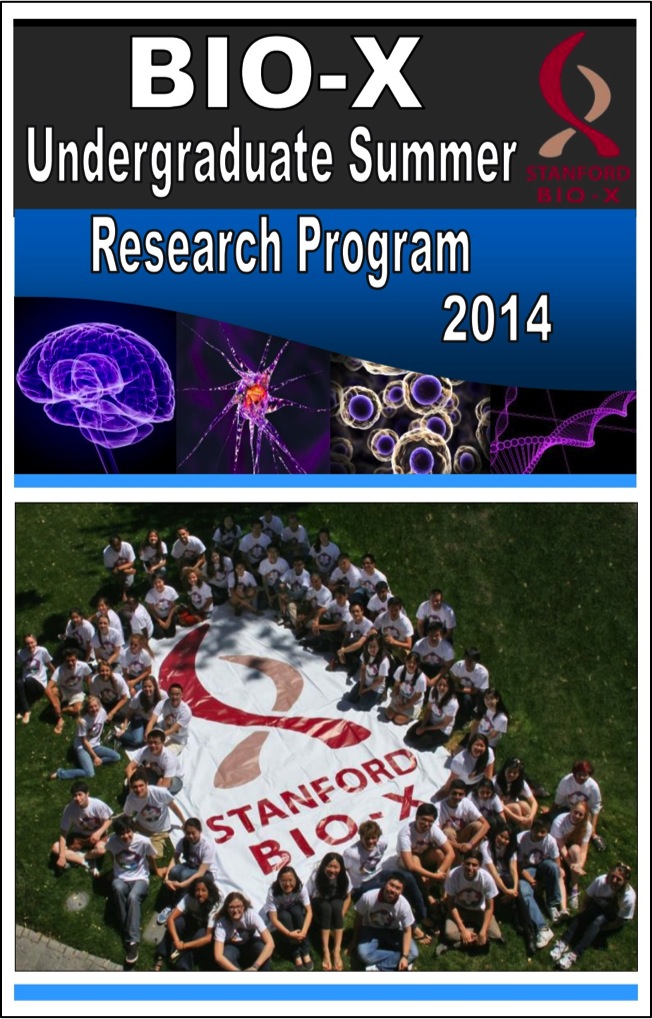 Bio-X UNDERGRADUATE SUMMER RESEARCH PROGRAM Bio-X UNDERGRADUATE SUMMER RESEARCH PROGRAMThe Bio-X Undergraduate Summer Research Program (USRP) supports undergraduate research training through an award designed to support interdisciplinary undergraduate summer research projects. The program is an invaluable opportunity for students to conduct hands-on research, learn how to carry out experiments in the laboratory, and develop the skills to read and analyze scientific literature. This program is eligible to Stanford students who want to work in the labs of Bio-X affiliated faculty. This year, nearly 160 students applied to the program, and 65 students were selected. Therefore, to date, 371 awards have been given to the Stanford undergraduate community to participate in the Bio-X Summer Research Program. The 2015 USRP officially ended during the last week of August, culminating in the USRP participants presenting their summer's research work during the poster session of last week's Bio-X IIP Seed Grant Symposium. In addition, during the 10 weeks of USRP, a total 30 different Faculty Talks took place on the 10 Wednesdays in Clark Center's S360 where the USRP students had the opportunity to learn about other faculty's research. To learn more about USRP and the Faculty Talks, please email Dr. Hanwei Li. |
COLLABORATIONS: We are cultivating and are highly successful in building meaningful collaborations with numerous corporate colleagues. New collaborations through our core programs are highly encouraged. To learn about how to get involved, please contact Dr. Hanwei Li, or Dr. Heideh Fattaey.
SYMPOSIUMS: Bio-X also holds symposiums every year that highlight our core programs. Thanks to all who came and attended the latest Bio-X IIP Seed Grants Program Symposium on August 26, 2015! It was extremely successful with 8 fantastic talks, and 170 posters presented during the reception (the largest poster session yet!). Nearly 400 people were in attendance of the event, with numerous discussions taking place throughout the event. Please go here to view the agenda and poster title list. Talks that were allowed to be videotaped will be uploaded as soon as possible.
All symposiums are listed on our website, including past IIP Seed Grants Program Symposiums, past Fellows Symposiums, and past Annual Symposiums.
If you'd like to learn more about the symposiums or any of the projects that were presented during the symposiums, please contact Dr. Hanwei Li with your questions.
News
 Delivering missing protein heals damaged hearts in animals, Stanford-led study finds
Delivering missing protein heals damaged hearts in animals, Stanford-led study finds
Bio-X Affiliated Faculty Pilar Ruiz-Lozano
Project received Bio-X IIP Seed Grant Program support
Scientists at the Stanford University School of Medicine and their colleagues have enabled damaged heart tissue in animals to regenerate by delivering a protein to it via a bioengineered collagen patch. “This finding opens the door to a completely revolutionary treatment,” said Pilar Ruiz-Lozano, PhD, associate professor of pediatrics at Stanford. “There is currently no effective treatment to reverse the scarring in the heart after heart attacks.” The work is described in a paper published online Sept. 16 in Nature. Ruiz-Lozano is the senior author. Vahid Serpooshan, PhD, a postdoctoral scholar in cardiology at Stanford, and Ke Wei, PhD, a postdoctoral scholar at the University of California-San Diego, share lead authorship. In a heart attack, cardiac muscle cells, called cardiomyocytes, die from a lack of blood flow. Replacing those dead cells is vital for the organ to fully recover. Unfortunately, the adult mammalian heart does not regenerate effectively, causing scar tissue to form.
 Large-scale treatment of parasitic-worm disease cost-effective, Stanford-led study shows
Large-scale treatment of parasitic-worm disease cost-effective, Stanford-led study shows
Bio-X Affiliated Faculty Jason Andrews
Stanford University School of Medicine researchers and their colleagues are calling for an urgent re-evaluation of global guidelines for the treatment of parasitic-worm diseases in light of a new study showing that large-scale treatment programs are highly cost-effective. Parasitic-worm diseases afflict some 1.5 billion people in the developing world, causing gastrointestinal problems, anemia, wasting, and cognitive and growth deficits in children, and in some cases, liver, bladder and intestinal problems that can be fatal. About 150,000 people die of complications from these parasitic infections every year. World Health Organization guidelines on treatment of the diseases focus only on school-aged children, as they are heavily affected by these diseases and can be easily treated in a school setting. The current guidelines call for annual or biennial treatment of children in high-prevalence areas. But the latest study, a modeling analysis of four different communities in the Ivory Coast, suggests that more frequent, community-wide treatment programs are far more beneficial, both for children and adults, and are cost-effective. “Most of the money spent on treating these diseases is focused on helping kids. But there are a lot of symptoms of disability in adults as well, and our results support the expansion of treatment to this adult population,” said Nathan Lo, a third-year Stanford medical student and research associate. Moreover, treating adults benefits children by reducing the chances they will become re-infected, he said. “If you only treat children, it might help them, but they often come home to neighbors, parents and teachers who may be infected, and the children can once again become infected,” Lo said. “It’s more effective for children if you treat them and the people around them.” Lo is lead author of the study, published online Sept. 15 in The Lancet Global Health. Jason Andrews, MD, the senior author of the study, said current global guidelines for mass drug administration for these infections have been based on expert opinion.
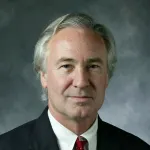 Filtered sunlight a safe, low-tech treatment for newborn jaundice
Filtered sunlight a safe, low-tech treatment for newborn jaundice
Bio-X Affiliated Faculty David Stevenson
Newborn jaundice can be treated with filtered sunlight, providing a safe, inexpensive, low-tech solution to a health problem that now causes permanent brain damage or death in more than 150,000 babies in developing countries each year. That’s the finding of a new study by researchers at the Stanford University School of Medicine and their colleagues that will be published Sept.17 in The New England Journal of Medicine. In the study, conducted in Nigeria, some mothers and babies sat under outdoor canopies that filtered out harmful wavelengths from sunlight, but still allowed jaundice-treating blue wavelengths to reach the babies’ skin. The filtered-sunlight treatment was as safe and effective as the blue-light lamps traditionally used to treat infant jaundice, the study found. “This research has the potential for global impact,” said the study’s senior author, David Stevenson, MD, the Harold K. Faber Professor in Pediatrics and senior associate dean for maternal and child health at Stanford. “All babies can get jaundice. In settings with no access to modern devices, we’ve shown we can use something that’s available all around the planet — sunlight — to treat this dangerous condition.” Stevenson also directs the Johnson Center for Pregnancy and Newborn Services at Lucile Packard Children’s Hospital Stanford.
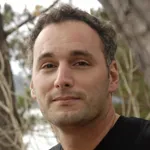 Combination drug therapy shrinks pancreatic tumors in mice
Combination drug therapy shrinks pancreatic tumors in mice
Bio-X Affiliated Faculty Julien Sage
A combination of two drugs, one already approved by the Food and Drug Administration, appears to be effective at shrinking pancreatic cancers in laboratory mice, according to a new study by researchers at the Stanford University School of Medicine. The drugs, which affect the structure and function of the cancer cell’s DNA rather than the activity of its proteins, also slowed the growth of human lung cancer cells in mice. The study clarifies the potential of these types of drugs for treating diseases. The researchers hope to soon test the drug combination in humans with pancreatic cancer. “Pancreatic cancer is one of the most deadly of all human cancers, and its incidence is increasing,” said Julien Sage, PhD, associate professor of pediatrics and of genetics. “Nearly always the cause of the disease seems to be a mutation in a gene called KRAS, which makes a protein that is essential for many cellular functions. Although this protein, and others that work with it in the Ras pathway, would appear to be a perfect target for therapy, drugs that block their effect often have severe side effects that limit their effectiveness. So we decided to investigate drugs that affect the DNA rather than the proteins.” Sage shares senior authorship of the study, published online Sept. 21 in Nature Medicine, with Jens Siveke, MD, professor of medicine at the Technical University of Munich. Stanford postdoctoral scholar Pawel Mazur, PhD, shares lead authorship with postdoctoral scholar Alexander Herner, MD, of TUM.
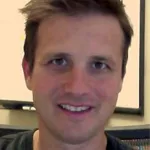
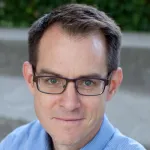 Drug disarms deadly C. difficile bacteria without destroying healthy gut flora
Drug disarms deadly C. difficile bacteria without destroying healthy gut flora
Bio-X Affiliated Faculty Matthew Bogyo and Justin Sonnenburg
Stanford University School of Medicine scientists successfully defeated a dangerous intestinal pathogen, Clostridium difficile, with a drug targeting its toxins rather than its life. By not aiming to kill the pathogen with antibiotics, scientists were able to avoid wiping out sizeable numbers of beneficial gut microbes. And while their study was performed in mice, the drug used has already been tested in clinical trials to treat other, unrelated conditions. So the researchers believe it could be moved rapidly into human trials for the treatment of C. difficile, as well. The findings, published online Sept. 23 in Science Translational Medicine, constitute the first-ever demonstration of a small molecule’s ability to disarm C. difficile without incurring the collateral damage caused by antibiotics. C. difficile is responsible for more than 250,000 hospitalizations and 15,000 deaths per year in the United States, costing the country more than $4 billion in health-care expenses, said the study’s senior author, Matthew Bogyo, PhD, professor of pathology and of microbiology and immunology. Lead authorship of the study is shared by Kristina Bender, PhD, a former postdoctoral scholar in Bogyo’s lab, and Megan Garland, a student in the Medical Scientist Training Program.
 Stanford team re-engineers virus to deliver therapies to cells
Stanford team re-engineers virus to deliver therapies to cells
Bio-X Affiliated Faculty James Swartz
Stanford researchers have ripped the guts out of a virus and totally redesigned its core to repurpose its infectious capabilities into a safe vehicle for delivering vaccines and therapies directly where they are needed. The study reported today in Proceedings of the National Academy of Sciences breathes new life into the field of targeted delivery, the ongoing effort to fashion treatments that affect diseased areas but leave healthy tissue alone. "We call this a smart particle," said James Swartz, the professor of chemical engineering and of bioengineering at Stanford who led the study. "We make it smart by adding molecular tags that act like addresses to send the therapeutic payload where we want it to go." Using the smart particle for immunotherapy would involve tagging its outer surface with molecules designed to teach the body's disease-fighting cells to recognize and destroy cancers, Swartz said. For Swartz and his principal collaborator, Yuan Lu, now a pharmacology researcher at the University of Tokyo, the result is a vindication. When they first started the research four years ago, funding agencies said it couldn't be done.
 5 Questions: Euan Ashley on diagnosing the undiagnosable
5 Questions: Euan Ashley on diagnosing the undiagnosable
Bio-X Affiliated Faculty Euan Ashley
The National Institutes of Health’s Undiagnosed Diseases Network launches today, and Euan Ashley, MRCP, DPhil, associate professor of cardiovascular medicine and of genetics at the Stanford University School of Medicine, has been named co-chair of the UDN steering committee. The network, which seeks to provide answers for patients with mysterious conditions and to advance medical knowledge of both rare and common diseases, is an outgrowth of a smaller NIH program begun in 2008 called the Undiagnosed Disease Program. The new, expanded network inaugurates an online application gateway for patients, called the UDN Gateway, that will harness the expertise of physicians at seven major medical centers across the United States, including the Stanford site, while integrating patient access, patient consent forms and patient genome and other data through a single Internet portal. Within two years, the UDN expects to handle 250 patients per year. Ashley, who co-directs Stanford’s clinical genomics service and the Center for Inherited Cardiovascular Disease, is interested in precision health — the new approach to health that more precisely defines diseases to better understand them, predicts which individuals or populations are at risk and seeks to prevent disease.
Events
| Bio-X October 1, 2015, 12:15 pm - 1 pm Clark Center, S360, Stanford, CA Frontiers in Interdisciplinary Biosciences: "Merging Molecular Mechanism and Evolution: Theoretical Concepts and Experimental Explorations of Biophysical Fitness Landscapes" Speaker: Dr. Eugene Shakhnovich, Harvard |
Biochemistry October 14, 2015, 4 pm - 5 pm Clark Center Auditorium, Stanford, CA Frontiers in Biology Speaker: Dr. William Delaney, Gilead |
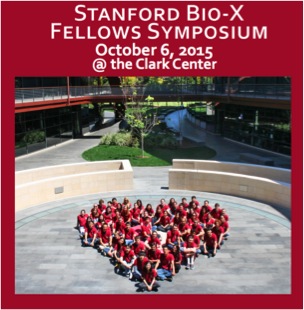 Bio-X Fellows Symposium Bio-X Fellows SymposiumPLEASE EMAIL DR. HANWEI LI IF YOU'D LIKE TO ATTEND THE SYMPOSIUM Tuesday, October 6, 2015 12 pm - 4 pm Clark Center Auditorium The Bio-X Fellowships are made possible by various gifts in order to promote interdisciplinary research by promising scientists who are working on projects that bridge the gap between biology and other fields. To date, over 150 Ph.D. students have received three-year fellowships through Bio-X. After completion of their training, our fellows continue to positively impact the scientific community through their roles as professors, co-founders of start-up companies, and research scientists, among others. 1:00pm Introduction CARLA SHATZ - David Starr Jordan Director of Stanford Bio-X 1:10pm Learning the Structure of Biomedical Relationships from Unstructured Text BETHANY PERCHA, Morgridge Family SIGF Fellow, Biomedical Informatics 1:30pm Wirelessly Powered, Fully Internal Optogenetics for Brain, Spinal, and Peripheral Circuits in Mice KATE MONTGOMERY, William and Lynda Steere Fellow and Bio-X Bowes Fellow, Bioengineering 1:50pm Abracadabra: Enabling Novices to Prototype Smart Medical Devices with Modular Electronic Building Blocks JOEL SADLER, Bio-X Bowes Fellow, Mechanical Engineering 2:10pm One-Minute Introductions of New Bio-X Bowes and Bio-X SIGF Fellows Poster Session in Clark Center Courtyard |
Resources
| Stanford University |
| Stanford Bio-X |
| Bio-X Seed Grants The Stanford Bio-X Interdisciplinary Initiatives Program (IIP) provides seed funding for high-risk, high-reward, collaborative projects across the university, and have been highly successful in fostering transformative research. |
| Office of Technology and Licensing "Techfinder" Search the OTL Technology Portal to find technologies available for licensing from Stanford. |
| Stanford Center for Professional Development - Take advantage of your FREE membership! - Take online graduate courses in engineering, leadership and management, bioscience, and more. - Register for free webinars and seminars, and gets discounts on courses. |
| Stanford Biodesign Video Tutorials on how FDA approves medical devices A series of video briefs recently produced by the Stanford Biodesign Program teaches innovators how to get a medical device approved for use in the United States. This free, online library of 60 videos provides detailed information on the Food and Drug Administration regulatory process, short case studies and advice on interacting with the FDA. |
To learn more about Stanford Bio-X or Stanford University, please contact Dr. Hanwei Li, the Bio-X Corporate Forum Liaison, at 650-725-1523 or lhanwei1@stanford.edu, or Dr. Heideh Fattaey, the Executive Director of Bio-X Operations and Programs, at 650-799-1608 or hfattaey@stanford.edu.

